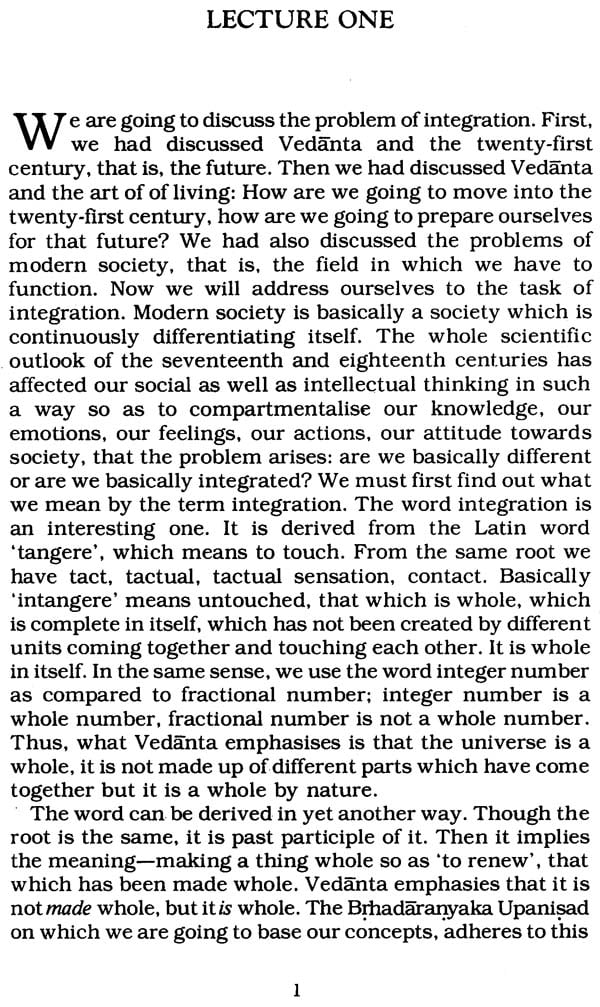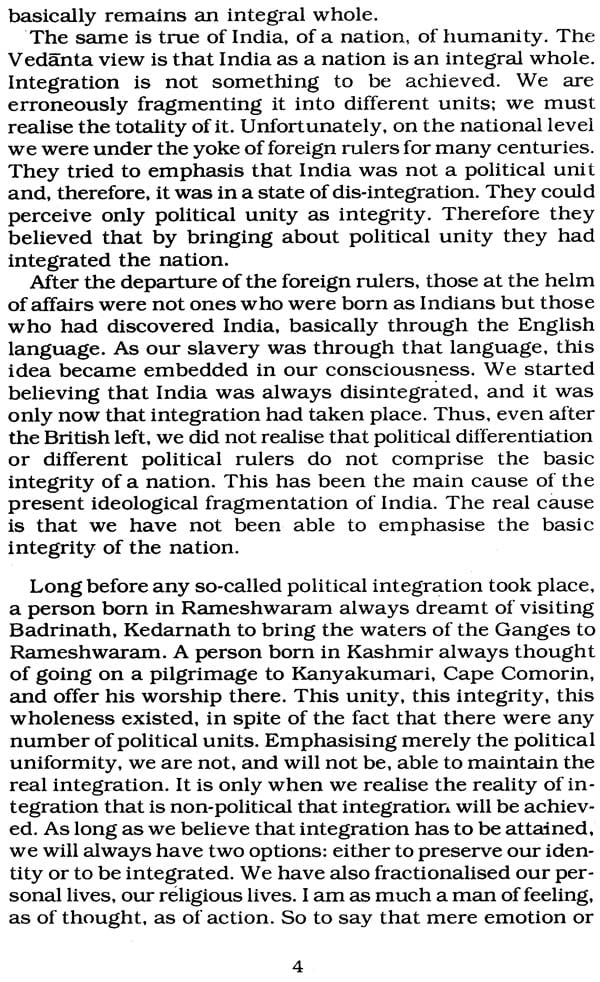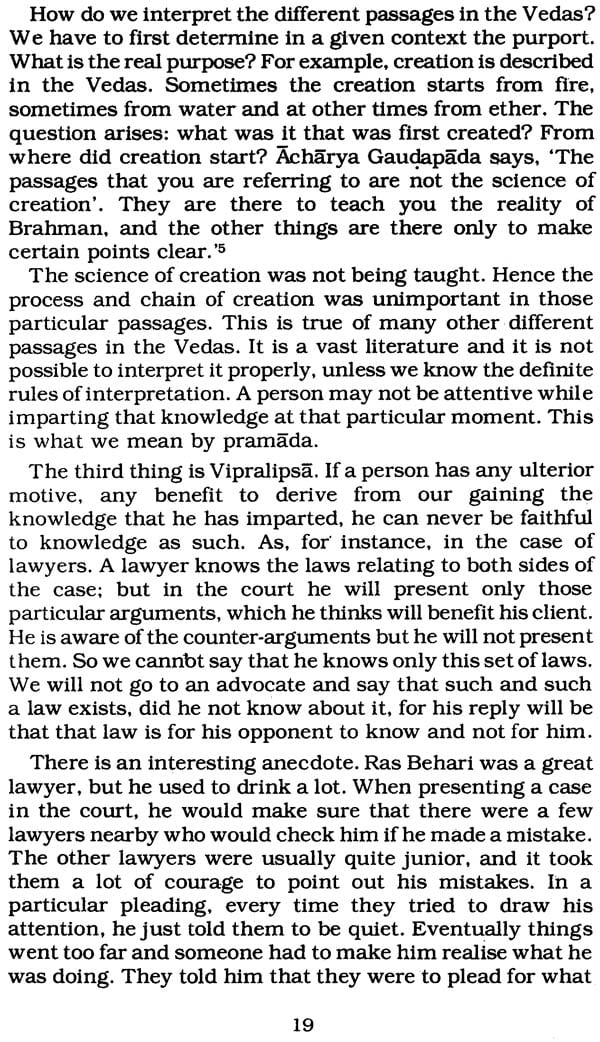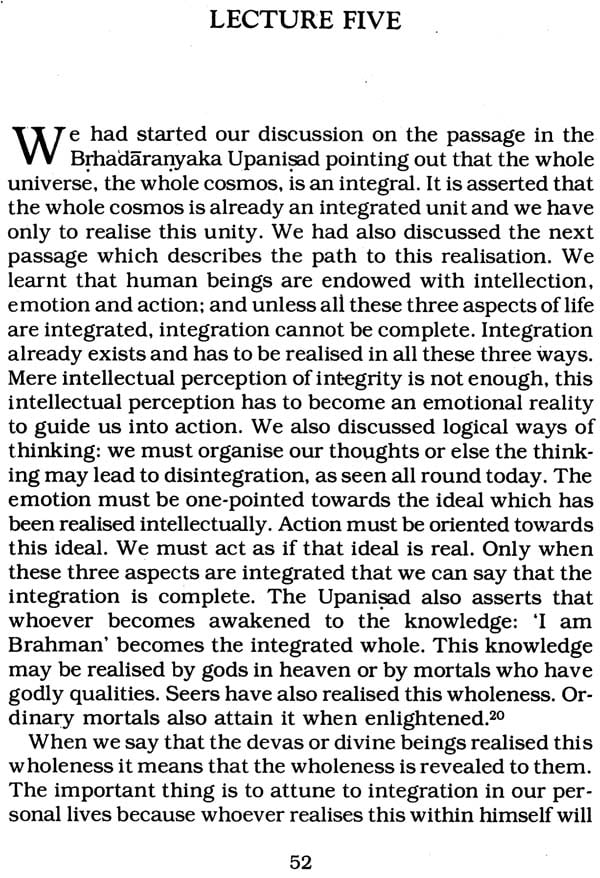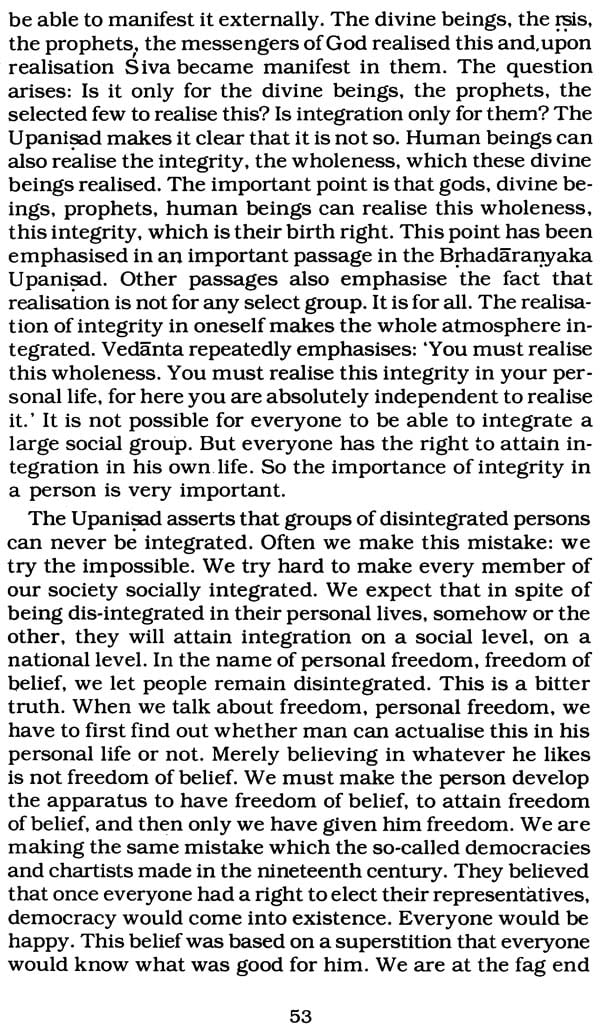
Vedanta and Integration (An Old Book)
Book Specification
| Item Code: | NAO635 |
| Author: | Swami Maheshanand Giri |
| Publisher: | Bharatiya Sanskriti Samaj |
| Language: | English |
| Edition: | 1988 |
| Pages: | 76 |
| Cover: | Paperback |
| Other Details | 8.5 inch X 5.5 inch |
| Weight | 120 gm |
Book Description
The day is cold, and dark, and dreary; It rains, and the wind is never weary; The vine still clings to the moldering wall, But at every gust the dead leaves fall, And the day is dark and dreary.
Be still sad heart! and cease repining; Behind the clouds is the Sun still shining; Thy fate is the common fate of all, Into each life some rain must fall, Some days must be dark and dreary.
Indian is facing the same problem of disintegration as Europe faced at the time of the dissolution of the Roman Empire. It has already lost two rounds by losing Burma and Ceylon in 1935; and Pakistan, Bangladesh and Tibet in 1947. As in Europe two cultural strands are in conflict, and unless they are harmonized, disintegration is inevitable. No army can hold a determined population at bay for ever. Christian culture was superimposed on germanic, Romanic, saxon and such other cultures. Eventually the spirit of these cultures asserted itself and nation-states were born. India also was a polycultural society. Hinduism harmonized them in a way that was satisfactory to all the units. Thus India remained culturally united throughout the ages. It was not political unity in the sense of a nation-state. The Hindu spirit unfolded the concept of samrat, which meant the most liberal federation on the political plane, with the spiritual cultural as the unifying thread. The present age of India beings from the Muslim conquest, which introduction the idea of political centralism along with cultural destruction, specially the spiritual element in it. Both these ideas are foreign to the indigenous population. A federal political and economic structure with near independence at the lowest level, as visualized by Mahatma Gandhi, will minimize the tensions of different geographical units. Centralism will lead to the break up of the nation. Similarly respect for the value system, and the religious and social systems of even small groups will decrease communal tensions. All religious must learn to respect the feelings of other religious groups. Merely emphasizing that Hindus observe respect for others will only increase the tension. A secular nation can only insist on the secular law of the land. The fascist tendency of governmental take-over of only the temples will bring communal tension to a heed to bring down the structure of cultural unity. It is equally true of social reform. Economic and social backwardness is not a monopoly of a few scheduled groups. It extends to the whole of society. Hence secular criteria must be established in place of the accident of birth. It is only then that the unity of nation can be saved.
Pandit Jawaharlal Nehru has pointed this out in this The Discovery of India. ‘Hiduism became the symbol of nationalism. It was indeed a national religion with its appeal to all those deep instincts, racial and culture, which form the basis everywhere of nationalism to-day.’ We have to remember that integration implies a foundation structure on which the building can be built. The present day leaders are ready to accept minority communalism, objecting only to majority communalism, this will only lead to disintegration as already seen in the case of Pakistan or Bangladesh. Throughout the forgien occupation of one thousand years we want to cater to minority communalism. Religious minority, if nationalist, will support the unity, and if the nation is secondary as far as it is concerned, the nation also will consider them as second-class citizens. West and East Germany, or South and North Korea are working towards unity. But though our bonds are stronger, we do not feel like working towards unity. It shows that integration is not what we are aiming at. The other geographical units feel that it is only accidental that they are not a separate state. Integration, if existed, would be evident in our attitude to the geographical units that were part and parcel of India.
Pandit Nehru maintained that ‘the essential characteristic of national consciousness is a sense of belonging together and of together facing the rest of mankind.’ Rest of mankind is to be noted. If the religious sentiment differentially prefers other nation to one’s own, one cannot agree that the group is integrated in the national stream.
It is our firm conviction that as far as India is concerned, integration can be founded only on the firm ground of spiritual unity. Thus integration implies a positive content. Even an agnostic like Pandit Nehru confesses: ‘The environment in which I have grown up takes atma, future life, the Karma theory of cause and effect, and re-incarnation for granted. I have been affected by this and so in a sense, I am favorably disposed towards the Advaita philosophy of the Vedanta. I realize that merely an intellectual appreciation of such matters do not carry one far.’ If these concepts which are the basis of the whole freedom movement are made the foundations, integration will manifest itself in not too distant a future. But as the present stands the outlook is bleak, for the national leadership has lost a national perspective, and seems to have been imprisoned in its philosophy of surviving for the sake of surviving. It is the same spirit that prevaila, whether the leadership calls itself opposition or otherwise. In these lectures we have tried to put forth a positive programme and ideal for integrity. Being a Vedanti one is always an optimist, and it is not too late to try. Yatra nah purve pitarah pareyuh ena jajnanah pathya anusvah.
Bhartiya Sanskrit Samaj took upon itself to arrange this lecture series at FICCI auditorium in the winter of 1987. The situation in Punjab, North Bengal, Assam, Kashmir, Srilanka, etc., at the present moment forces us to analyze the content of our nationalism. We feel that Vedanta, which has been the national outlook in the past, will be able to see us through the present crisis if it is properly applied. The present analysis may help in the process.
Contents
| Preface | vii |
| Lecture I | 1 |
| Lecture II | 13 |
| Lecture III | 27 |
| Lecture IV | 40 |
| Lecture V | 52 |
| Appndix | 66 |
